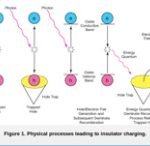In my last blog here, I talked about last 30+ years of semiconductor IC market. While we have seen this market growing at CAGR of ~9% over last 30+ years, the CAGR of current decade is expected to be at just ~4%. Although the base size of the overall semiconductor IC market is quite healthy, expected to be at ~$378B by 2019, we cannot hope… Read More
Tag: semiconductors
Samsung 14nm IS in Production!
There is quite a debate raging on whether Samsung Foundry is truly in production at 14nm. The word amongst the fabless semiconductor ecosystem is yes and this comes from two very large fabless companies that are reportedly using Samsung for 14nm and have even started looking at Samsung 10nm. Of course you can Google for stories by… Read More
ASML ASyMptotic progress- When will we get to EUV?
- ASML making progress – but is it fast enough?
- ASML has missed 10nm , can it catch 7nm? An economic question
- Day one at SPIE- Better tone than last year but still cautious
1000 simulated wafers versus 700 simulated
At the opening of the SPIE conference ASML announced that TSMC had reached 1000 wafers a day “exposed”… Read More
Silvaco TCAD Webinar
TCAD is a somewhat specialized area since not that many people design semiconductor processes compared to the number who design chips. Bit without TCAD there would be no chips. One area where the two domains intersect is that of SEE, where neutrons (mainly) can cause a flop or a memory bit to change. Since we live on a radioactive planet… Read More
Cycling, Semiconductors and CES 2015
I’m an avid cyclist that rode some 6,744.3 miles in 2014, according to www.strava.com, a free web site and popular app for road bikers like me. At CES this week I’ve read about many creative devices and apps to make your cycling experience better, so here’s my take on all of it.… Read More
Make Semiconductor IP Reuse Successful?
As I have mentioned before, Apple has changed the way we live on many different levels (iPod, iTunes, iPhone, iPad, etc…) and the Apple Ax SoC series is no different. You have to ask yourself how is Apple able to churn out a new industry leading SoC EVERY year? I can assure you design reuse is a big part of that answer.
One of the companies… Read More
Who is Using Samsung 14nm?
As I have mentioned before, there are very few secrets in Silicon Valley. Just last week I was minding my own business at a Starbucks when I overheard two engineers complaining about Samsung 14nm shuttles being delayed. They had badges on but I won’t out them because it could have easily been any of the fabless companies in Silicon … Read More
What does the Ford Mustang and Intel’s Gordon Moore Have in Common with Local Motors?
1964 Vision, Volume and Moore’s Law
The 1964 New York World’s Fair saw Lee Iacocca, then a young 40 year old General Manager, introduce a car that inspired “total performance” and was for a “young America out to have a good time.” This young America would become the baby boomer generation. The Mustang was revolutionary in its affordability,… Read More
GlobalFoundries and IBM
So it’s true. IBM is selling its semiconductor division to GlobalFoundries. Actually, selling is a sort of euphemism for paying them $1.5B to take it off their hands. At least according to Bloomberg. There have been rumors for weeks that IBM wanted to pay $1B to get rid of the division, but GF wanted $2B. Looks like they split… Read More
Is Number of Signoff Corners an Issue?
Semiconductor companies continue to use the traditional corner-based signoff approach that has been developed more than 40+ years ago and has since remained mainly unchanged as an industry paradigm. Initially it had 2 corners, namely Worst Case (WC) and Best Case (BC) with the maximum and minimum cell delay respectively. Note… Read More



